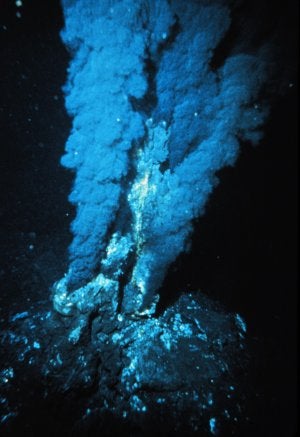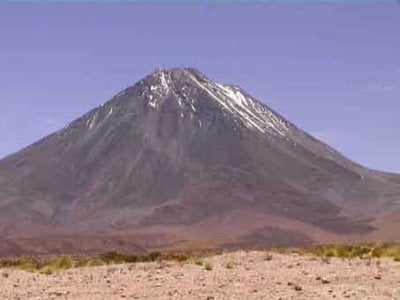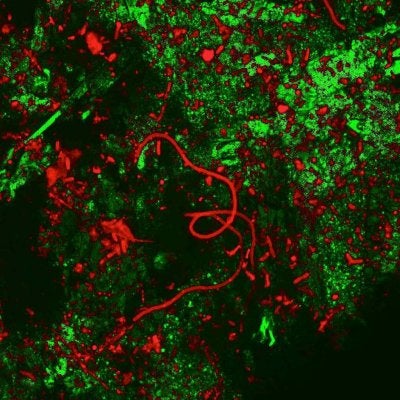Traditional sites for such exploration have been hydrothermal vents at mid-ocean ridges, populated by microbes that love methane and high temperatures. Researchers recently reported the discovery of such methanogens thriving in the depths of gold mines in South Africa, several miles deep in Earth’s crust. Ice cores from Antarctic lakes have even uncovered dormant photosynthesizing cyanobacteria.
But last November, a team of geologists and biologists went to another extreme altogether. Scientists from NASA and elsewhere traveled to the highest lake in the world, which is nestled in the crater of the Peruvian volcano Licancabur. At its 6,000-meter altitude, the volcano’s life forms would not be as concerned about high temperatures, pressures, or acidity — the main issue for survival at Licancabur’s summit is ultraviolet (UV) radiation.
Life on Earth succeeds in protecting itself from UV exposure with different pigments, generally oranges and reds, known as carotenoids. At lower elevations, microbes have shucked many of these UV-blocking compounds in order to be more efficient with their energy use, but microbes at higher elevations have retained them for survival. The microbes at Licancabur may be very ancient and could provide a key to how such protections evolved in early life on Earth.
David Fike, a graduate student at the Massachusetts Institute of Technology, has prepared about 20 samples from the summit lake, as well as from microbial mats at hot springs and sediments from Laguna Blanca and Laguna Verde, two lakes that lie several hundred meters below Licancabur.
His coworker Andrew Hock, a graduate student at the University of California at Los Angeles, is trying to determine the UV conditions as well as the chemical and geothermal environment of Licancabur. Because of the water chemistry of the summit lake (which has no name), microbes living at different depths would experience different UV levels. “Our estimate is that once you go down one to two meters in the lake, UV is attenuated to what it would be at sea level,” Hock said, so it’s the upper 1 to 2 meters that will prove most interesting for Mars analogs.
So far, their results are preliminary.
Surviving UV exposure “is an interesting puzzle for early Earth — and a potential puzzle for Mars if there was life on Mars,” McKay said.












